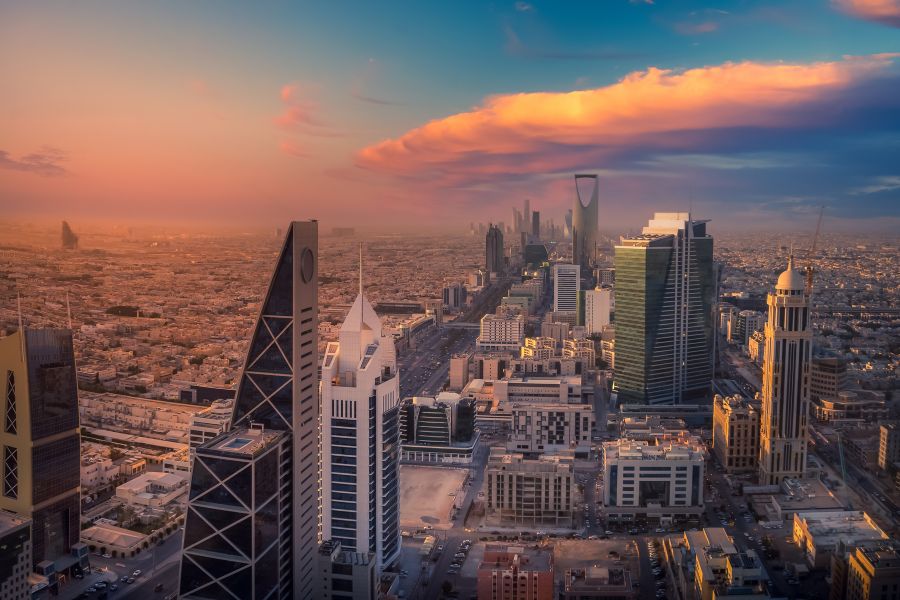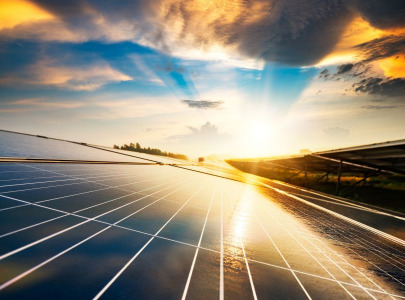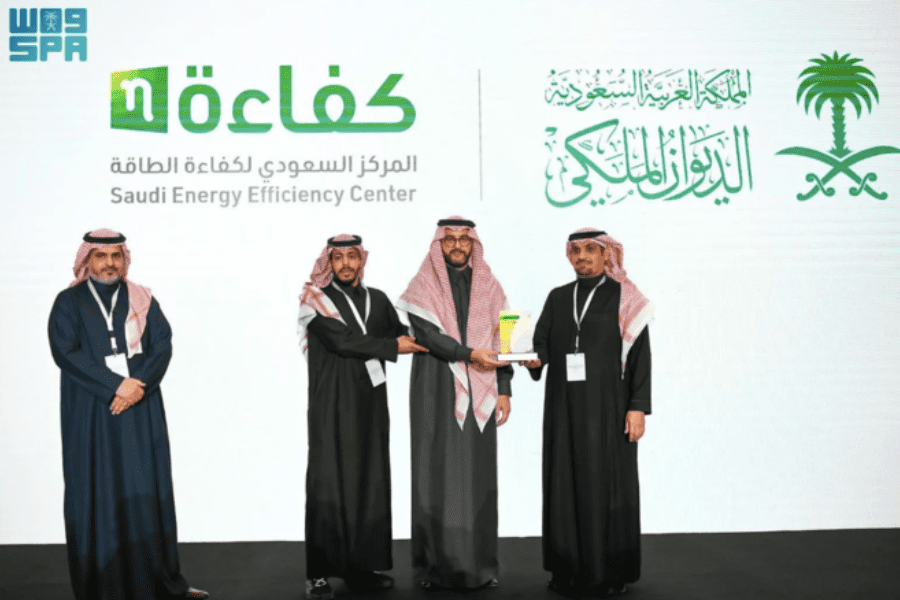An electric dream: Saudi Vision 2030 and its electricity goals

Saudi Arabia is embarking on a journey toward a new era of prosperity, and central to this course is the Saudi Vision 2030. First launched in 2016, the comprehensive plan — largely spearheaded by Saudi Crown Prince and Prime Minister Mohammed bin Salman — aims to reduce reliance on oil through diversification across various sectors.
Electricity, a critical enabler of economic growth, plays a key role in achieving the broader Saudi Vision 2030 targets.
Electricity and economic diversification
There’s an inevitable connection between electricity and economic growth. Electricity is one of the most essential resources today, powering virtually all industries. Making it affordable means fostering growth in different sectors.
In a report by the International Renewable Energy Agency (IRENA), renewables proved to be the cheapest form of power. IRENA noted that amid rising fossil fuel prices, investments in renewables in 2021 saved $55 billion in global energy generation costs in 2022.
“Renewables are by far the cheapest form of power today,” Francesco La Camera, Director-General of IRENA said.
“2022 is a stark example of just how economically viable new renewable power generation has become. Renewable power frees economies from volatile fossil fuel prices and imports, curbs energy costs, and enhances market resilience – even more so if today’s energy crunch continues,” he added.
Recognizing the role of electricity, the Saudi government has previously revealed that it aims to produce the lowest-cost electricity in the world. To achieve this, the oil-rich country has been initiating various solar and wind projects.
What are the Vision 2030 electricity goals?
Saudi doesn’t only want its electricity to be affordable but also greener.
By 2030, the country aims to produce about half of its electricity using renewable energy sources, with the remaining 50% to be generated from gas. This ambitious goal is more than just a testament to Saudi Arabia’s commitment to sustainability. Additionally, it marks a significant shift in its energy paradigm.
According to the International Energy Agency (IEA), Saudi’s electricity generation mix is still dominated by natural gas (58.4%) and oil (41.3%). About 0.3% is sourced from renewables, the majority of which is generated by solar photovoltaic (PV) facilities.
While the road ahead is long, hope is on the horizon. In a report by Mordor Intelligence, the country’s power generation market size is estimated at 87.81 GW in 2024. Growing at a compound annual growth rate of 5.8%, it is expected to reach 116.41 GW by 2029.
“Over the medium term, factors, such as increasing diversification of energy sources from oil and gas to cleaner energy sources, such as solar, wind, and bioenergy, are expected to drive the Saudi Arabian power market, along with supportive government policies leading to the development of renewable energy capacity during the forecast period,” remarked the market intelligence firm.
A concerted effort
To meet Vision 2030 electricity goals, the country’s major power sector entities are playing their own critical roles.
For example, the Ministry of Energy (MOE) has a National Renewable Energy Program (NREP) that rolls out various initiatives, including privatizing all electricity generation by 2025. The MOE also plans to spend $293 billion on power and renewable energy projects by 2030.
ACWA Power is another key player, being the largest private sector power and water entity in the country.
Tasked to spearhead Saudi Arabia's energy transition, ACWA Power has forged a strategic partnership with the Public Investment Fund (PIF). Through this team up, the company will help make the projects within the 40+ GW PIF renewable pipeline a reality.
In 2023, the company also set a new record by signing 16 Offtake Agreements, including 13 for buying and selling electricity, for a total capacity of 10.7 GW. Over 66% of this new capacity comes from renewable sources. With this, ACWA Power’s total power capacity from projects that are operational, under construction, or in advanced development will now be about 55 GW. Of this, more than 24GW, or 44.5%, comes from renewable energy sources.
Aligning with Vision 2030
Meanwhile, the Saudi Electricity Company (SEC), under the leadership of its CEO, Eng. Khaled bin Hamad Al-Gnoon, also contributes to realizing the country’s electricity vision. Its primary focus is to enhance the quality and reliability of the electricity service.
“To achieve our aims, the Saudi Electricity Company has aligned its strategic investment program with the priorities of the National Plan for the Kingdom’s electricity sector. The main objective is to level up the quality and reliability of the electricity service provided to end consumers, in addition to achieving the sustainability objectives outlined in Vision 2030,” Eng. Al-Gnoon previously remarked.
He added, “Our investments are primarily focused on enhancing the reliability and efficiency of the electricity system. This entails augmenting the reliability of the power transmission grid to enhance the efficiency of energy generation while facilitating production from renewable energy sources and automating our distribution network.”
According to its 2023 Annual Report, the SEC runs 476 units across 38 power plants throughout the country. The capacities range from 15 megawatts (MW) to 700 MW. By the end of last year, these units had a combined capacity of over 55,000 MW. This accounts for 66% of the Saudi’s total capacity, making SEC the biggest electricity producer in the Middle East and North Africa region.
While ensuring adequate power generation, the SEC also boasts sustainability milestones.
Aligning with Saudi’s aim for net-zero emissions by 2060, the company has set a goal to reach net-zero by 2050. Last year, it advanced its sustainability efforts by collaborating with WAVE for biodiversity protection, buying carbon credits to neutralize emissions, and issuing a green sukuk.
Additionally, during the landmark COP28 Climate Summit, they signed eight Memoranda of Understanding (MoUs) with key local and international partners to support carbon emission reduction efforts.
SEC’s improved ESG ratings — rising from 32 in 2022 to 35 in 2023 on the S&P Global ESG score — reflect the company’s robust sustainability efforts.
A bright, electric future
As stated, electricity is one of the most essential resources today, powering industries big or small. A secure and clean energy mix in any country means a more sustainable and resilient economy.
Currently, electricity in Saudi Arabia is undergoing a seismic shift, as the country aims to hit its Saudi Vision 2030 targets, which include sourcing half of its electricity from renewables.
In his remarks about Saudi Vision 2030, Saudi Crown Prince and Prime Minister Mohammed bin Salman underscored the importance of taking action against climate change and championing sustainability.
“Climate action will enhance competitiveness, spark innovation, and create millions of high-quality jobs. Young people, both in the kingdom and the world, are demanding a cleaner, greener, and more inclusive future, and we owe it to them to deliver on this,” he enthused.
With the country’s greening electric sector at the forefront and various initiatives already underway, the path ahead looks promising.
Embark on a journey into the future of electricity at the Saudi Electricity Expo, a premier event gathering global leaders in technology and services.
Aligned with Vision 2030, this expo drives Saudi Arabia's power projects forward, attracting stakeholders from government authorities to investors.
Explore investment opportunities, network with industry leaders, and delve into key topics such as renewable energy and smart grids through exhibitions, seminars, and workshops. Join us in shaping the kingdom's sustainable development goals and diversifying its economy through innovation and collaboration in the electricity sector.
Energy & Utilities - Middle East and Africa Market Outlook Report 2024.
This must-have report for industry players offers a thorough understanding of the latest developments, challenges, and opportunities in the region, supported by data, analysis, and expert insights.









